RESOURCES
Know the Difference
Not all buzzing insects are honey bees! Learn how to tell the difference between honey bees, bumblebees, wasps, and yellow jackets. This page will help you identify each species, understand their role in nature, and know how to respond when you see them around your home or yard.
Honey Bees
Yellow Jackets
Bumble Bees
Hornets
Honey Bees
Honey bees (Apis mellifera) are essential pollinators that play a vital role in our food system and the health of ecosystems. They live in large, well-organized colonies that can include tens of thousands of bees, including a queen, worker bees, and drones. These bees are usually golden-brown with black stripes and a fuzzy body that helps them collect pollen.
Honey bees gather nectar and pollen from flowers, turning the nectar into honey and using the pollen to feed their young. They are not aggressive by nature and will typically only sting if they are provoked or if their hive is in danger. A honey bee can sting only once—after stinging, it dies because its stinger gets stuck in the skin. If you see a honey bee in your yard or garden, it’s best to stay calm. It’s likely just doing its job pollinating plants and flowers. Because of their gentle nature and their importance to agriculture and the environment, honey bees should be protected and not harmed.
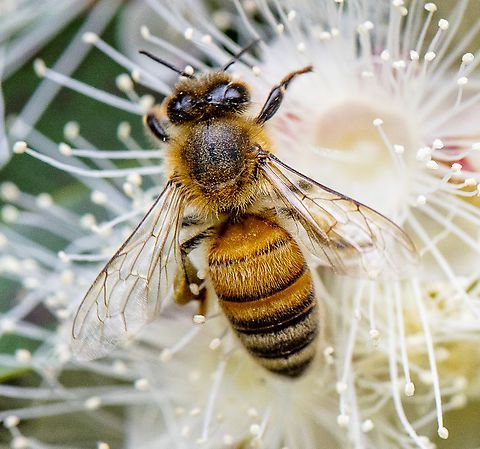
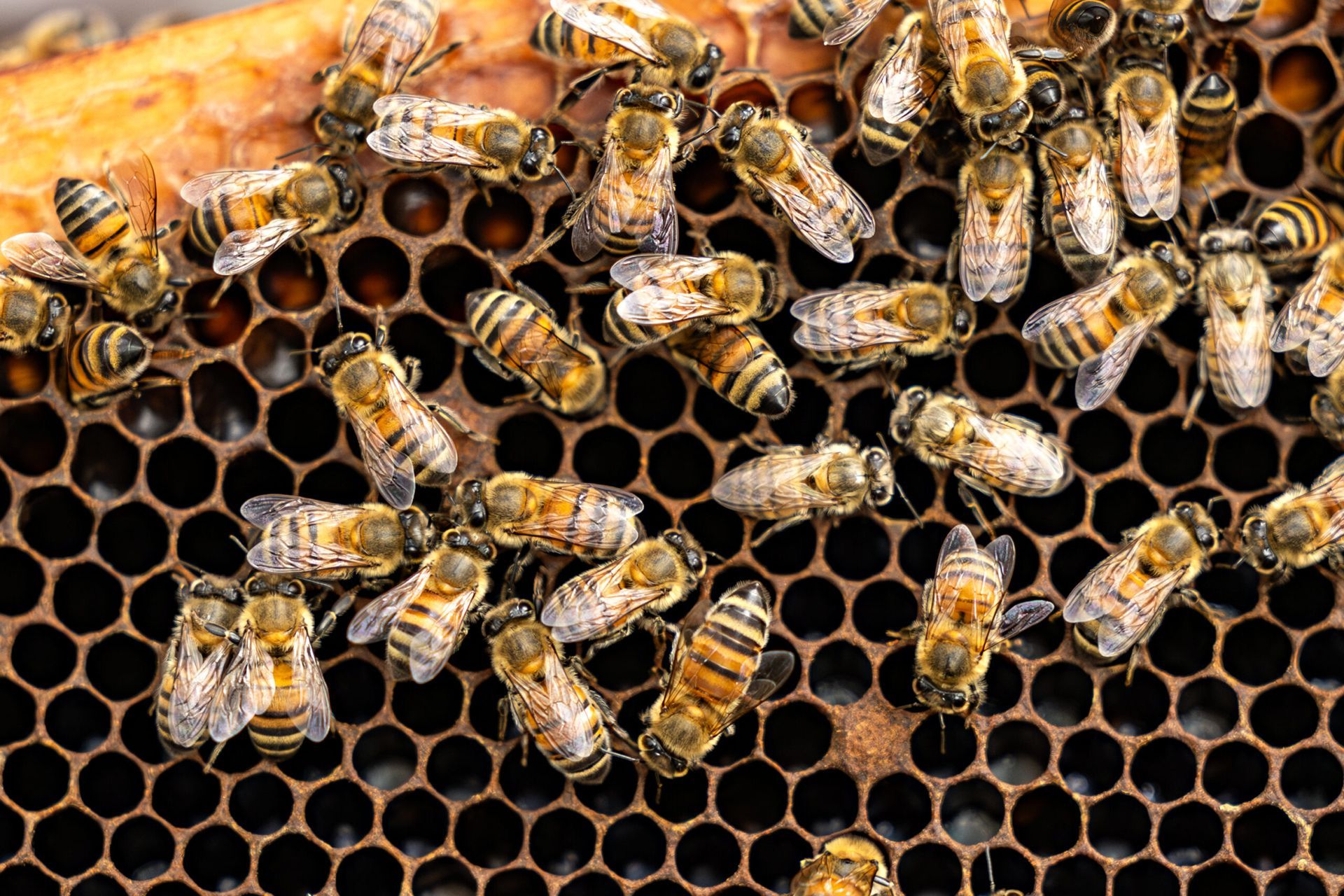
Yellow Jackets
Yellow jackets are actually a type of wasp and are often mistaken for honey bees because of their size and coloring. However, yellow jackets have smooth, shiny black and yellow bodies, no fuzzy hairs, and a much more defined waist. They are known for being aggressive, especially in late summer and early fall when their colonies grow large and food becomes scarce.
Yellow jackets usually build their nests underground, in wall voids, or inside hollow logs. They are scavengers and are attracted to human food, especially meats, sugary drinks, and sweet foods—making them common uninvited guests at picnics and trash cans. Unlike honey bees, yellow jackets can sting multiple times and will do so if they feel threatened. Their stings are painful and can cause allergic reactions in some individuals. Because of their aggressive behavior and their tendency to nest near people, yellow jackets can be a safety concern and should be dealt with by professionals if found on your property.

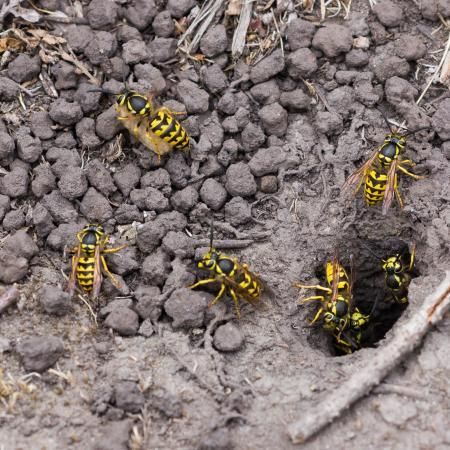
Bumble Bees
Bumble bees (Bombus species) are large, round, and very fuzzy insects that are easy to recognize by their black and yellow striped bodies. They move slower than other bees and tend to hover around flowers for longer. Bumble bees are excellent pollinators and are especially effective because their hairy bodies trap and transfer more pollen between plants. They are important for crops like tomatoes, berries, and peppers, which often require buzz pollination.
Bumble bees live in small colonies—usually fewer than 400 bees—in underground burrows, thick grass, or abandoned rodent holes. They are social but not aggressive. Bumble bees will generally ignore humans unless they feel their nest is being disturbed. While they can sting more than once, they rarely do. Bumble bees are an essential part of our ecosystem and should be appreciated and protected whenever possible.
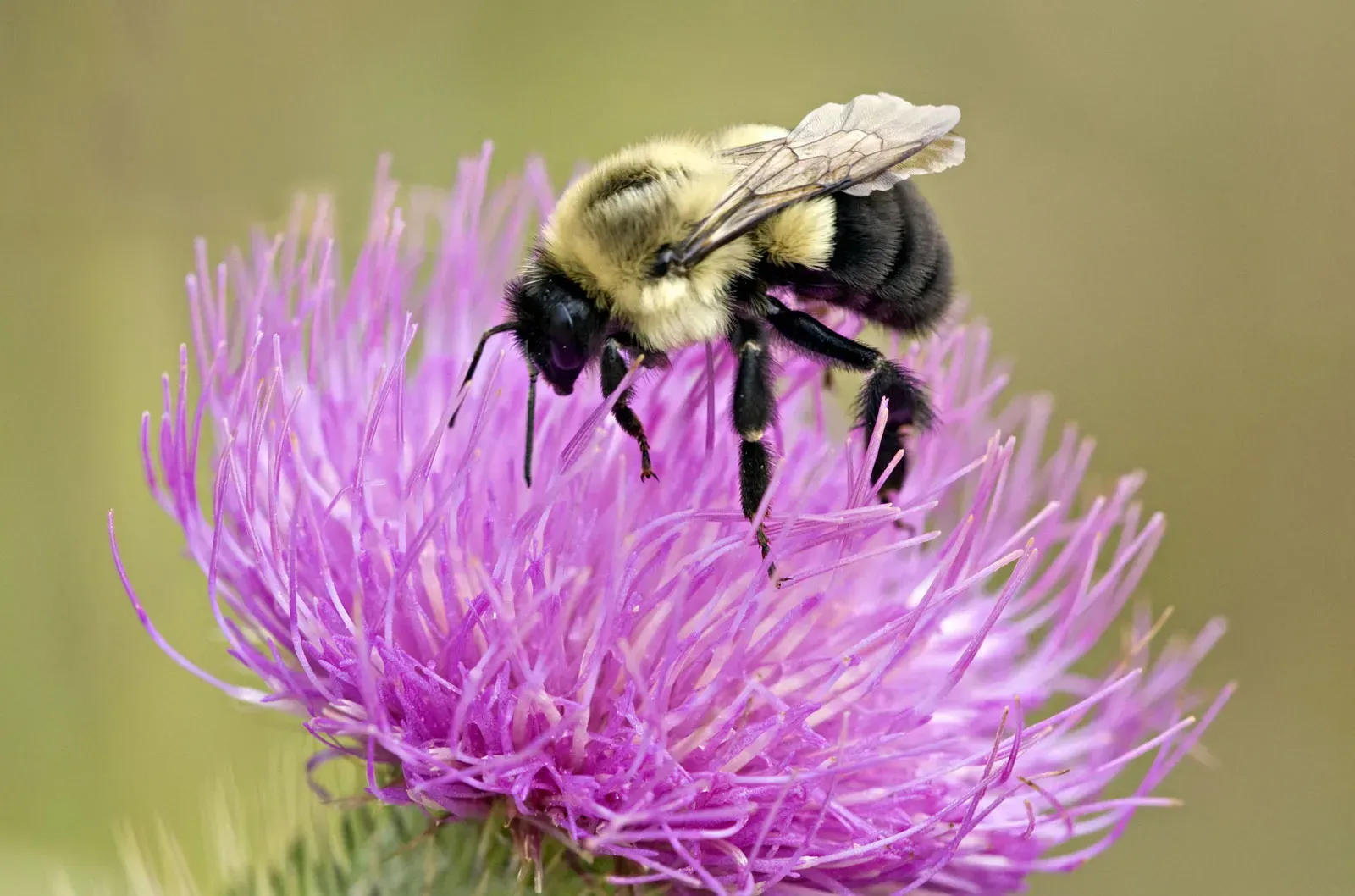
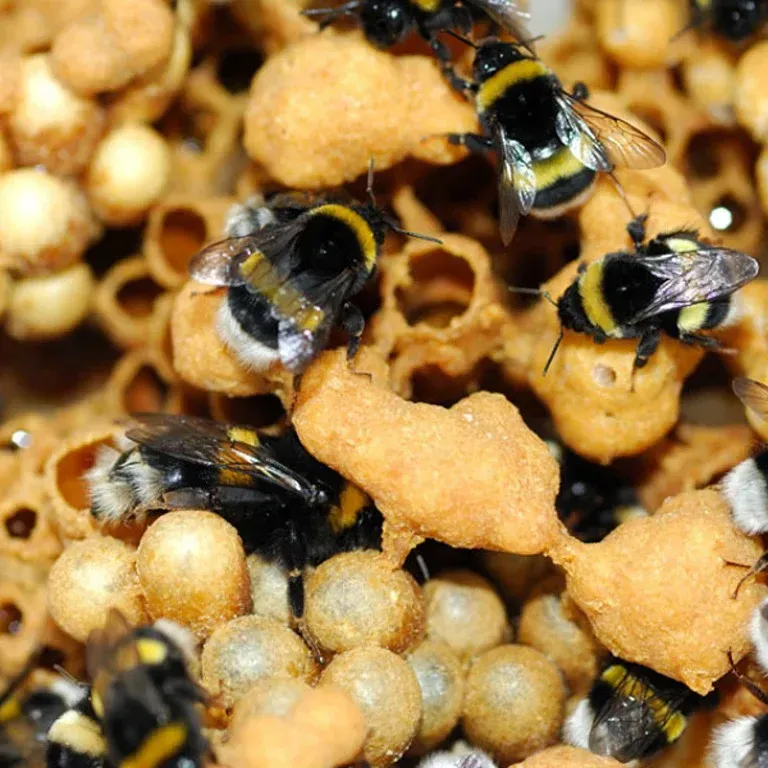
Hornets
Hornets are a type of large wasp, often measuring up to 1.5 inches in length. The most common hornet in the U.S. is the European hornet (Vespa crabro), which is brown with yellow-orange stripes. Hornets are known for being more aggressive than bees and can deliver painful stings multiple times. Their venom can cause swelling, pain, and sometimes allergic reactions.
Hornets build large, enclosed paper-like nests, often in trees, attics, or under eaves. These nests can grow quickly and house hundreds of hornets. Hornets are highly protective of their nests and may chase intruders who come too close. While hornets do help control pests by hunting other insects, they can be dangerous when nesting near homes or in high-traffic areas. If you discover a hornet nest on your property, it’s best to contact a licensed pest control professional to handle it safely.
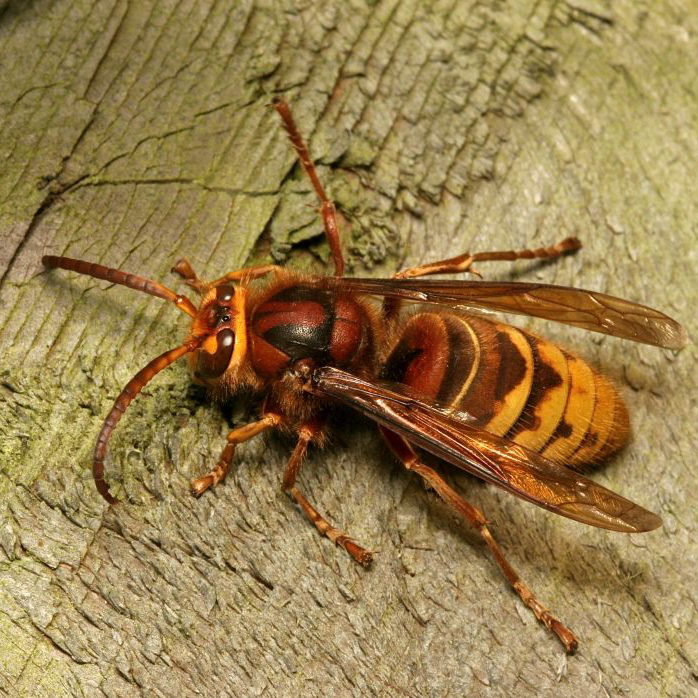
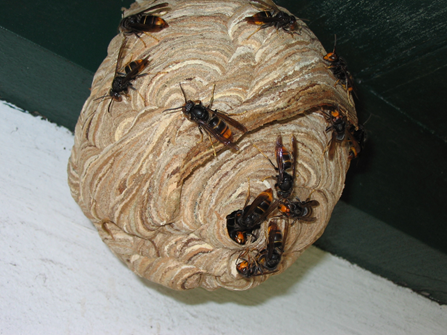
Have a Swarm?
Do you have a cluster of bees hanging out on your tree, fence, or porch? DON'T PANIC. This is a natural part of how honey bees grow their colonies.
Click below to learn what to do and how we can help safely relocate the swarm.
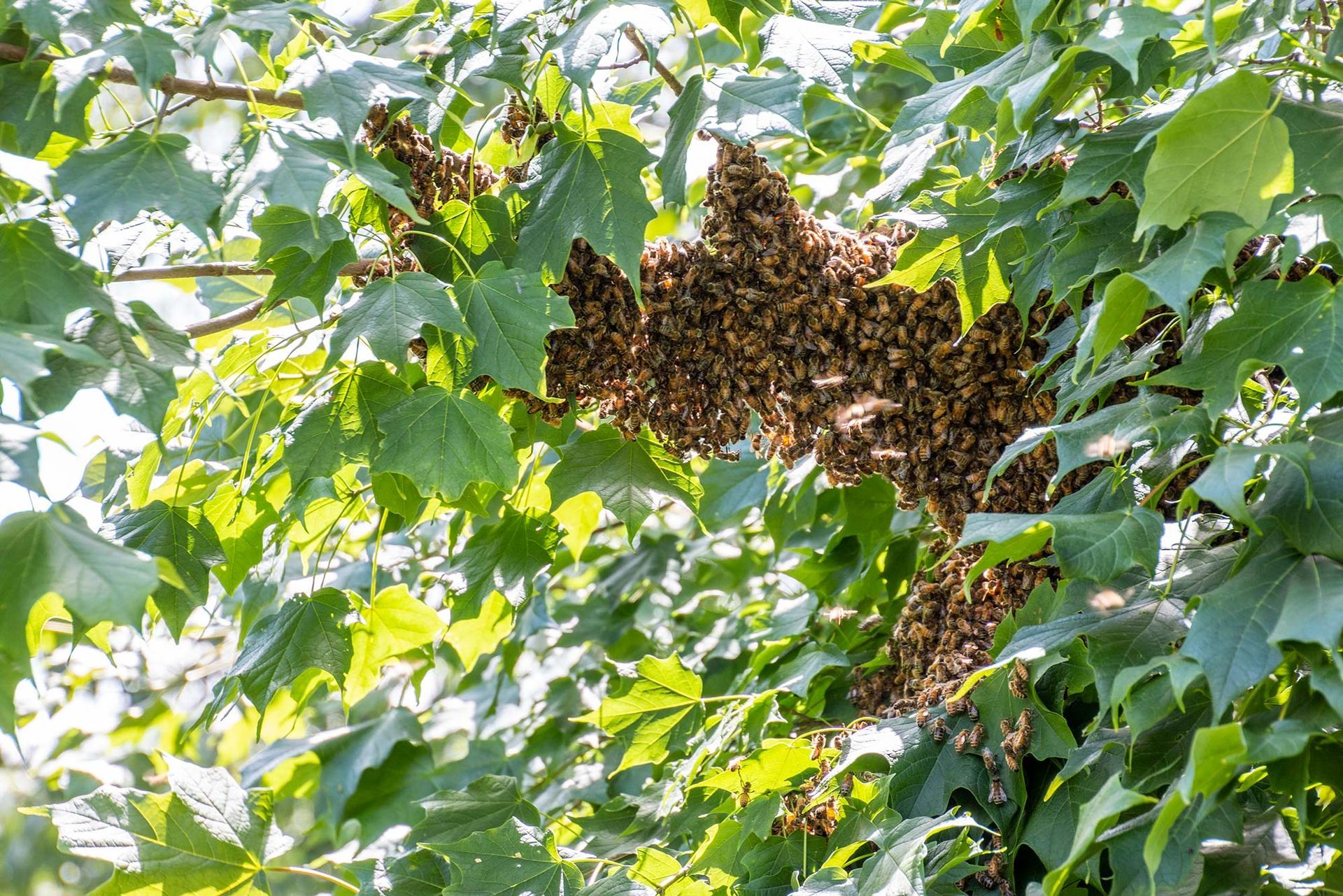
Club Corner
Looking to connect with local beekeeping groups and contacts across Ohio? Whether you're looking for guidance, mentorship, or community, this is a great place to start.
